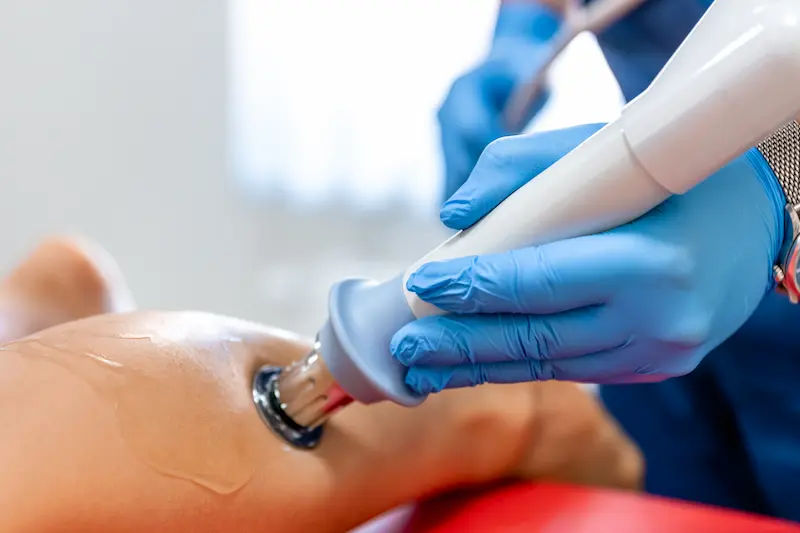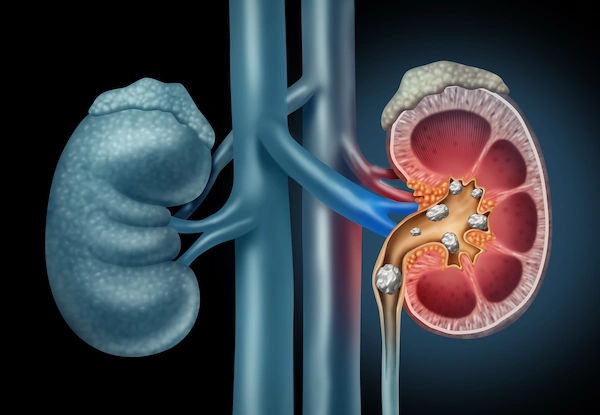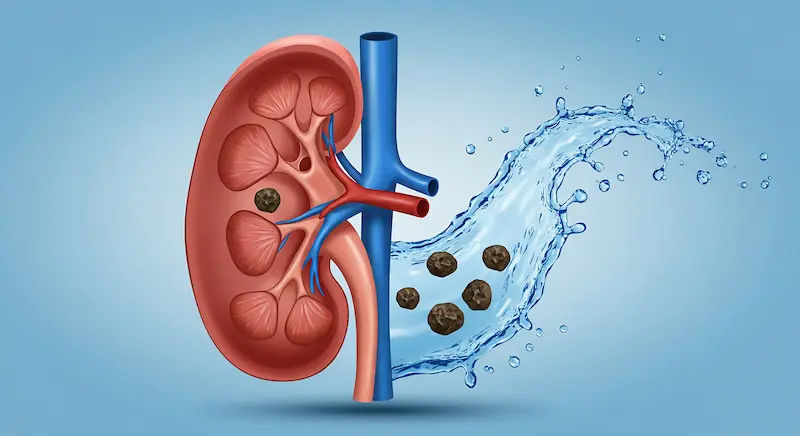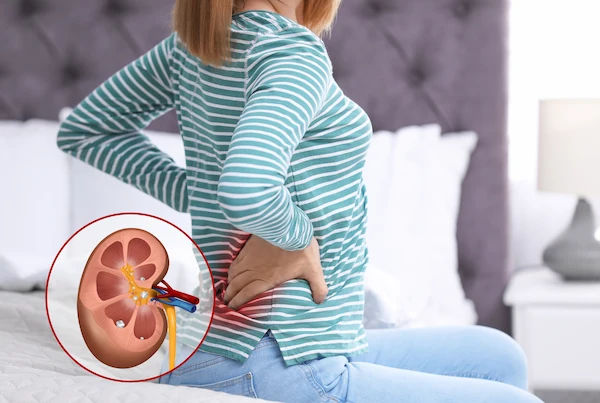The Unspoken Agony: 10 Surprising Facts About Urinary Stones
Discover the unspoken agony of urinary stones with these 10 surprising facts. Learn about causes, symptoms, risks, and prevention strategies to protect your kidney health and overall well-being.

Written by Dr. Vasanthasree Nair
Reviewed by Dr. Dhankecha Mayank Dineshbhai MBBS
Last updated on 8th Oct, 2025
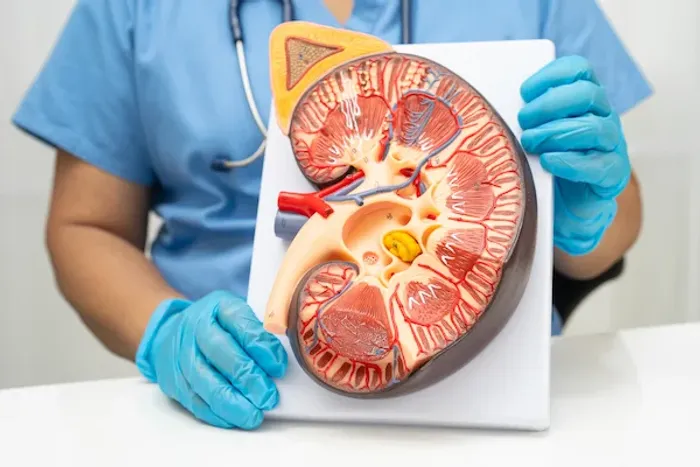
That sudden, crippling pain in your back or side can be a terrifying experience, often pointing to one common culprit: urinary stones. Affecting about 1 in 10 people at some point in their lives, these tiny, hard mineral deposits can cause disproportionately large problems. But how much do you really know about them? Beyond the well-known advice to "drink more water," there's a world of fascinating and crucial information that can help you understand, prevent, and deal with this painful condition. This guide goes beyond the basics to uncover ten surprising facts about urinary stones, debunk common myths, and empower you with knowledge for better urinary tract health. Whether you're looking for prevention tips or seeking to understand a recent diagnosis, we’ll break down the science into actionable insights.
What Exactly Are Urinary Stones?
Often called kidney stones, urinary stones can form anywhere in the urinary system—the kidneys, ureters, bladder, or urethra. Think of them as tiny, jagged crystals that clump together when your urine contains more crystal-forming substances (like calcium, oxalate, and uric acid) than the fluid in your urine can dilute.
The Formation Process: A Saturation Story
The key to understanding stone formation is the concept of saturation. Your urine contains various minerals and salts. When you're dehydrated, or if you excrete too much of these substances, the urine becomes "supersaturated." It's like trying to dissolve too much sugar in a glass of water—eventually, the sugar starts to crystallise at the bottom. Similarly, in supersaturated urine, minerals begin to crystallise and stick together, forming the initial nidus of a stone.
Not All Stones Are Created Equal: The Common Types
Knowing the type of stone is critical for effective prevention. The most common types include:
Calcium Oxalate Stones: The reigning champion, accounting for about 80% of stones. They form when calcium combines with oxalate in the urine.
Uric Acid Stones: These can form in people who don't drink enough fluids, lose too much fluid, eat a high-protein diet, or have gout. They are not visible on standard X-rays.
Struvite Stones: Less common, these can develop as a result of a urinary tract infection (UTI). They can grow quickly and become quite large, sometimes with few symptoms.
Cystine Stones: These are rare and occur in people with a hereditary disorder called cystinuria, which causes the kidneys to excrete excessive amounts of certain amino acids.
Consult Top Specialists Here
Debunking Common Myths
Several misconceptions surround urinary stones, leading to ineffective prevention strategies and unnecessary anxiety. Let's clear the air on two of the biggest myths.
Myth 1: "Only Older Men Get Kidney Stones"
Fact: While it's true that men are more likely to develop stones (about 11% of men vs. 9% of women in the US), the gap is narrowing. Furthermore, symptoms of kidney stones in females can sometimes be mistaken for other conditions like ovarian cysts or endometriosis. A 2016 study noted that the incidence of stones in women has been steadily increasing, potentially linked to dietary and obesity trends. Stones can also occur in children, debunking the myth that it's exclusively an adult problem.
Myth 2: "Cutting Out All Calcium is the Answer"
Fact: This is one of the most dangerous myths. Since most stones contain calcium, people often think avoiding calcium will help. However, for the most common type (calcium oxalate stones), this can backfire. Dietary calcium actually binds to oxalate in your intestines, preventing it from being absorbed and reaching the kidneys. A diet too low in calcium can lead to higher oxalate absorption and actually increase your risk of forming calcium oxalate stones. The key is to get the right amount of calcium from food, not supplements, unless prescribed by a doctor.
The Silent Journey: From Formation to "The Event"
Stones can form and sit quietly in the kidney for years without causing a single symptom. The trouble begins when they decide to take a trip down the narrow ureter—the tube connecting the kidney to the bladder.
Recognising the Signs
A stone on the move can cause a range of symptoms, known collectively as renal colic. These include:
Severe, sharp pain in the back, side, lower abdomen, or groin.
Pain that comes in waves and fluctuates in intensity.
Pain or burning sensation during urination.
Pink, red, or brown urine (hematuria).
A persistent need to urinate, urinating more often than usual, or urinating in small amounts.
Nausea and vomiting.
If you experience these symptoms of kidney stones, especially severe pain, it's crucial to seek medical attention. If your pain is severe or you have a fever, consult a doctor online immediately with Apollo24|7 for urgent evaluation and guidance.
The Unmistakable Pain: Why It Hurts So Much
What does kidney stone pain feel like? Many describe it as the worst pain of their lives, comparable to childbirth. The pain isn't caused by the stone itself "scratching" you. Instead, it results from the stone blocking the flow of urine. This causes a backup of urine into the kidney, leading to a rapid and painful swelling of the kidney (hydronephrosis). The muscle walls of the ureter then contract spasmodically to try and push the stone along, creating the intense, cramping, wave-like pain.
Unexpected Causes and Risk Factors
While dehydration is the number one risk factor, other surprising elements can increase your susceptibility.
Your Geography and Climate Matter
There is a well-documented "Stone Belt" in the southeastern United States. States like Alabama, Mississippi, and Georgia have higher rates of stone formation. The reason? Hotter climates lead to increased perspiration and more concentrated urine if fluid intake isn't adequately increased. This highlights the critical role of hydration in preventing stones, regardless of where you live.
The Sugar and Salt Connection You Might Be Missing
High sodium intake can increase the amount of calcium your kidneys need to filter, raising your stone risk. But fructose, a common sugar in sugary sodas and processed foods, is another major culprit. Fructose can increase the excretion of calcium, oxalate, and uric acid—a perfect storm for stone formation. Watching your sugar and salt intake is a key dietary tweak for kidney stones prevention.
Treatment Options Aren't Just About Pain
Treatment depends entirely on the stone's size, location, and type. The goal is not just pain management but also ensuring the stone passes or is removed safely.
When Small Stones Pass Naturally
For small stones (typically less than 5mm), the most common approach is conservative management. This involves drinking a lot of water (up to 2-3 litres a day) to help flush the stone out, along with pain medication. Most of these small stones will pass on their own within 31 to 40 days.
Sound Waves and Scopes: Advanced Medical Interventions
For larger stones, or those causing complications, medical procedures are necessary:
Shock Wave Lithotripsy (SWL): This non-invasive procedure uses high-energy sound waves to break the stone into tiny fragments that can be passed more easily in the urine.
Ureteroscopy: A thin scope is passed through the urethra and bladder into the ureter. The surgeon can then see the stone and remove it with a small basket or break it up with a laser.
Percutaneous Nephrolithotomy (PCNL): Used for very large stones, this surgery involves a small incision in the back to remove the stone directly from the kidney.
Proactive Prevention Strategies
Preventing recurrence is a primary focus after a first stone event. How to prevent calcium oxalate stones and other types revolves around lifestyle modifications.
Hydration is Key: How Much Water is Enough?
The single most important thing you can do is drink plenty of fluids. Aim for about 2.5 to 3 litres (about 8-10 glasses) of water per day. Your urine should be light yellow or clear. Apollo24|7 offers convenient home collection for tests like a 24-hour urine analysis, which can help your doctor tailor specific fluid and dietary recommendations based on your unique risk factors.
Dietary Tweaks Tailored to Your Stone Type
A one-size-fits-all diet doesn't work. Based on your stone type:
For Calcium Oxalate Stones: Eat a normal amount of dietary calcium, limit sodium, and limit high-oxalate foods (like spinach, nuts, tea, and chocolate)
For Uric Acid Stones: Limit animal-based proteins (red meat, organ meats, shellfish) as they increase uric acid levels.
Conclusion
Understanding the facts about urinary stones empowers you to take control of your health. They are not an inevitable curse but a manageable condition. By prioritising consistent hydration, making informed dietary choices, and understanding your personal risk factors, you can significantly reduce your chances of experiencing the profound discomfort of a passing stone. Remember, the pain is a signal—a powerful reminder to listen to your body's needs, primarily its need for water. If you have a history of stones or are experiencing symptoms, don't hesitate to seek professional guidance. If your condition does not improve after trying conservative methods, book a physical visit to a urologist with Apollo24|7 for a comprehensive evaluation and personalised treatment plan. Knowledge and proactive care are your best defences against urinary stones.
Consult Top Specialists Here
Consult Top Specialists Here
Dr Gayatri Pegu
Nephrologist
15 Years • MD (General Medicine) DM(Nephrology)
Guwahati
Apollo Clinic Guwahati, Assam, Guwahati
Dr Ch Sashidhar
Nephrologist
20 Years • MBBS, MD General Medicine, DNB, Nephrology
Secunderabad
Apollo Hospitals Secunderabad, Secunderabad

Dr Praveen Kumar Etta
Nephrologist
10 Years • MBBS,MD DM(SGPGI) FORMER ASST(PIMS)
Hyderabad
Apollo Spectra Ameerpet, Hyderabad

Dr. Pardha Saradhi
Nephrologist
9 Years • MBBS, MD-DNB (Gen. Med.), DNB (Nephro)
Hyderabad
Apollo Hospitals D R D O kanchanbagh, Hyderabad
(75+ Patients)

Dr Ajay Kumar Sharma
Transplant Specialist Surgeon
39 Years • MBBS, MS, DNB, FRCS (Glas), FRCS (Edin), FRCS (General Surgery), MSc Medical Education
Delhi
Apollo Hospitals Indraprastha, Delhi

